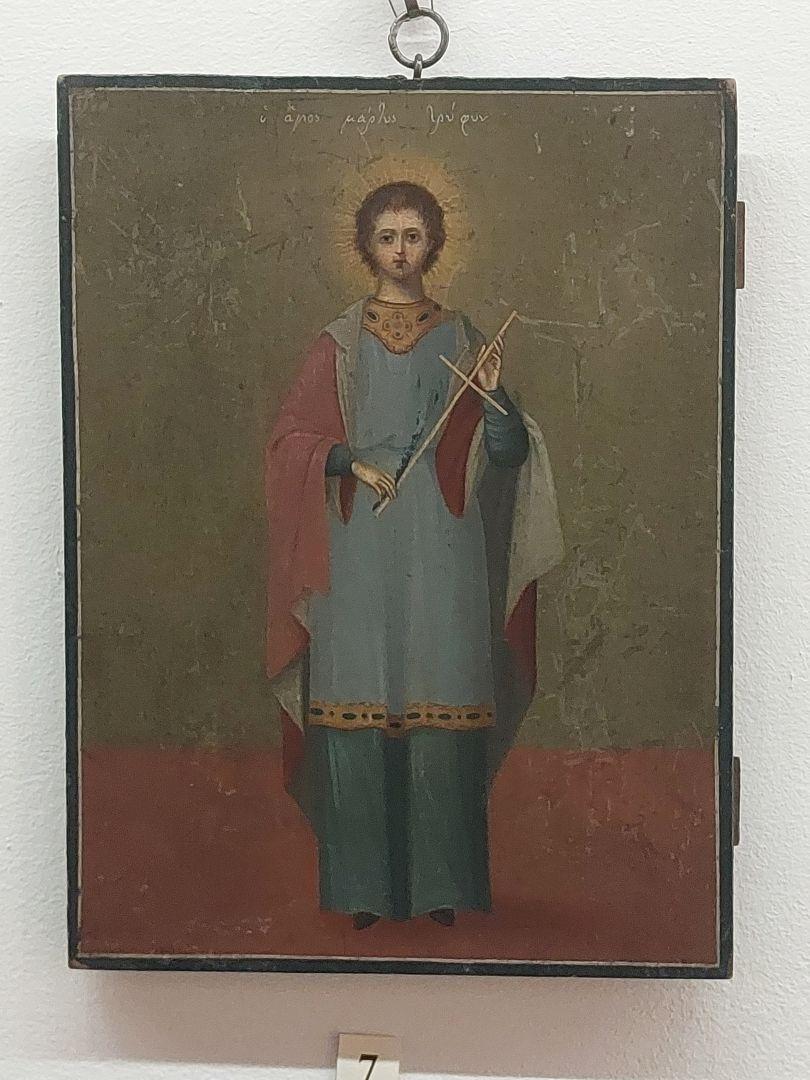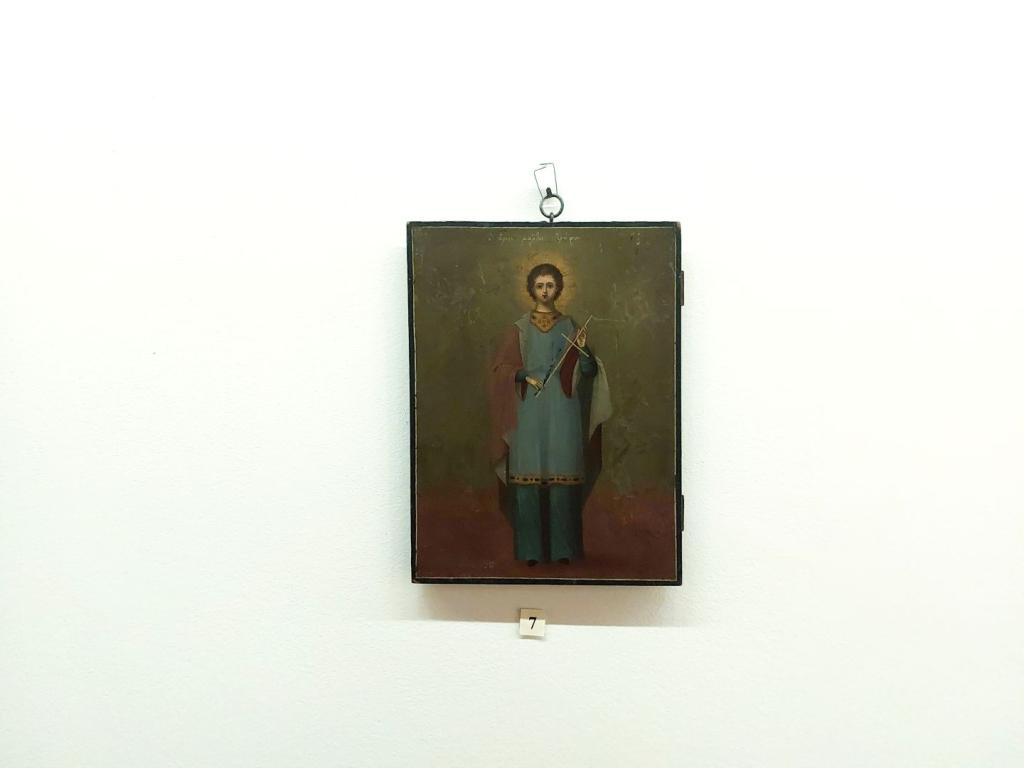
We invite you to visit the Metropolitan Museum in Iași to discover the icon of Saint Martyr Trifon, a valuable piece from the collection of the Metropolitan Cathedral, displayed in the Ekklesia Hall. This icon, dating from the 19th century, stands out for its artistic execution and strong spiritual significance.
The icon depicts Saint Trifon according to Byzantine tradition, as described in Dionysius of Furna's Erminia of Byzantine Painting: "young, without a beard, and with curly hair." His serene face is surrounded by a halo with rays, symbolizing holiness. He is portrayed standing in a dignified posture, wearing a red mantle over a blue tunic with golden edges, flowing down to the ground. In his right hand, he holds a golden cross, a sign of his martyrdom. At the top, the Greek inscription Ο άγιος μάρτυς Τρύφων (Saint Martyr Trifon) confirms the saint’s identity.
Saint Trifon is commemorated every year on February 1st and is recognized as the patron saint of gardens, orchards, vineyards, and birds. He is known for removing pests and protecting crops from drought and hail. Additionally, he is known as a banisher of evil spirits and a healer of diseases, belonging to the group of saints known as "Unmercenary Doctors," who healed through faith without asking for compensation.
Saint Trifon was born in the 3rd century in Phrygia (Asia Minor), in a devout family. From his childhood, he earned a living as a goose herder. It was during this time that he received the gift of healing the sick, driving away demons, and converting pagans to the true faith. The fame of his miracles quickly spread throughout Phrygia.
His most well-known miracle was driving a demon out of the daughter of Emperor Gordian of Rome. Witnessing the power of his prayer, the emperor rewarded him with gifts and wealth, but Trifon gave them to the poor, returning to his simplicity and humility before God.
After the death of Gordian, the new emperor, Decius, launched a large-scale persecution of Christians. Saint Trifon was captured and brought to trial before the governor Aquilin in Nicaea. He was subjected to terrible tortures, but his faith remained unwavering. In the end, he was beheaded with a sword, becoming one of the martyrs of early Christianity. His body was buried in his native village in Phrygia (modern-day Turkey).
Saint Trifon is venerated with devotion by the faithful, and his icon at the Metropolitan Museum in Iași remains a symbol of faith, healing, and protection against evil.
We look forward to welcoming you to discover this remarkable icon and walk in the footsteps of the saints in this space of history and Orthodox spirituality.
Claudia-Gabriela Alucăi




